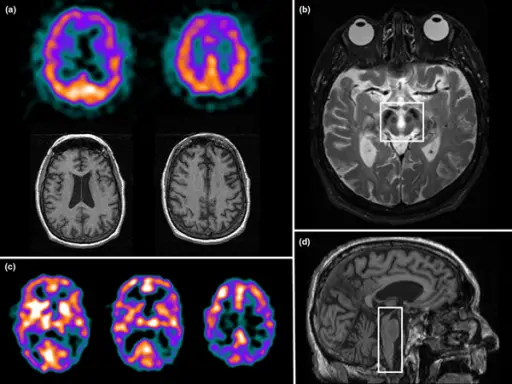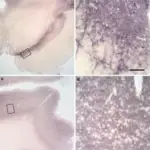
Structural and functional neuroimages of patients presenting with early onset dementia associated with atypical parkinsonism. (a) Axial 99mTc-ethylcysteinate dimer (99mTc-ECD) perfusion single photon emission computed tomography (SPECT) and T1 magnetic resonance imaging (MRI) of a patient with pathologically confirmed corticobasal degeneration. (b) Axial T2 MRI of a patient with Wilson's disease demonstrating the face of the giant panda sign. (c) Axial 99mTc-ECD perfusion SPECT of a patient with early-onset Lewy body spectrum disorder demonstrating biparietal hypoperfusion extending into lateral occipital areas. (d) Sagittal T1 MRI of a patient with progressive supranuclear palsy demonstrating the humming bird sign.Early-onset dementias: diagnostic and etiological considerations.
Masellis M, Sherborn K, Neto P, Sadovnick DA, Hsiung GY, Black SE, Prasad S, Williams M, Gauthier S - Alzheimer's research & therapy (2013). Not Altered. CC.
Atypical parkinsonism syndromes are progressive diseases that present with some of the signs and symptoms of Parkinson disease, but do not respond well to drug treatment with levodopa. Aytpical parkinsonism syndromes are associated with abnormal protein buildup within brain cells.
Examples of atypical parkinsonism syndromes include:
- Progressive supranuclear palsy
- Corticobasal degeneration



